New Zealand is an island country in the Pacific. It is considered the cleanest from an environmental point of view. If someone has a question about the relationship of this country with honey, you can answer that the relationship is, and the most direct, because Manuk shrub growing in New Zealandor, Tea Tree is a honey plant of one-of-a-kind honey with a unique composition.
Honey from time immemorial was famous for its beneficial properties, was an excellent antioxidant. But what is in the composition of this sort of honey is just a “bomb” (in the good sense of the word).
In this country, the bees are not fed with sugar and syrups to increase the yield of honey. They are not treated with "chemistry" for diseases, because cruise workers have high immunity. This is another reason to consider manuka honey as one of the most environmentally friendly bee product varieties.
Table of contents
The taste and color of manuka honey
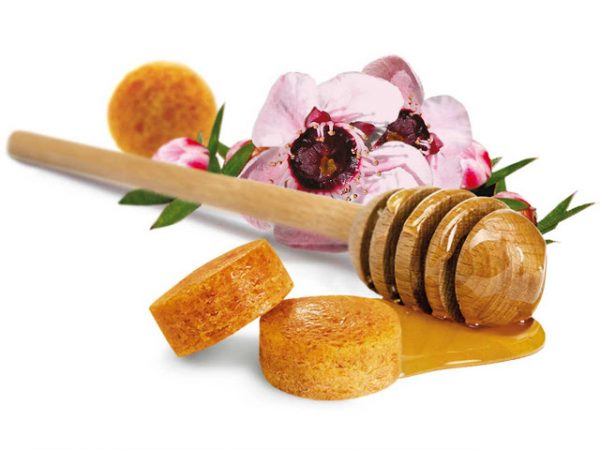
Freshly deflated honey Tea tree is rich yellow orange color. After crystallization it brightens a little, but does not turn white. The aroma is delicate, the taste is sweet, pleasant, without bitterness. After saccharification, the consistency becomes viscous, but hardens only at low sub-zero temperatures. A long period leaves a pleasant aftertaste.
Ingredients: vitamins and minerals
In collected from the tea tree nectar in the hive, bees add the enzyme glucose oxidase to honey. This is done to save it.
When this type of honey comes in contact with liquids, this the enzyme slowly releases hydrogen peroxidehaving antibacterial properties.Its level is not high enough to cause damage to body tissues, but it is enough to kill bacteria.
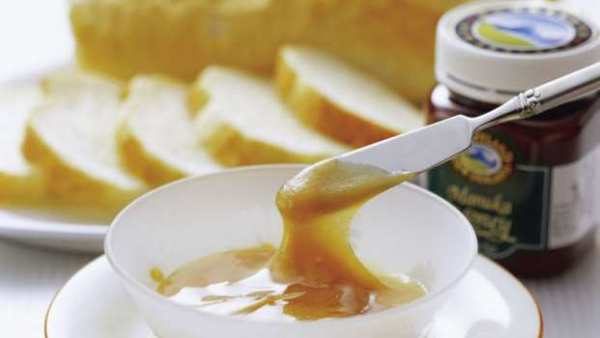
In addition to minerals and vitamins, there is methylglyoxal in tea tree honeyor abbreviated as MGO. What is the value of this substance? By penetrating the affected cell, methylglyoxal produces hydrogen peroxide at a concentration that evaporates liquid from the cell. This allows you to deprive the food of bacteria, and they die. The fluid balance is soon restored, the cell returns to normal, but without harmful bacteria.
Beneficial features
To determine the effectiveness of honey from Tea Tree, the manufacturer developed a unique factor Manuka UMF. This is a kind of scale from 5+ to 25+. The higher this indicator, the more effective honey acts on the body., saturating with useful substances, and the more pronounced its antibacterial properties.
It is almost the only variety of mono-flower honey, that is, honey of one honey plant.Antibacterial, anti-inflammatory, antimicrobial, the properties in it going wild.
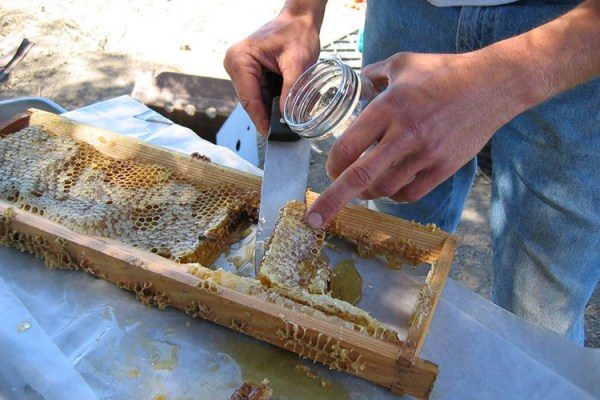
Like any other honey, this grade helps to recuperate after overworkand also calms the nervous system. It is recommended for the prevention of eating one teaspoon in the morning on an empty stomach and in the evening before bedtime.
Restorative effect of honey from Tea Tree manifested in the rapid restoration of energy balance, increased immunity. It helps the pancreas, liver, kidneys, heart.
You may be interested in the composition and properties of other varieties of honey:
- Useful properties and contraindications cotton honey
- Benefit and harm honey honey
- Useful properties and contraindications dyagilovogo honey
- Useful properties and contraindications coriander honey
Contraindications and harm
In fact, Manuka honey with an efficacy index of 15+ can be attributed to the drug. That's why It is recommended to use sick people after appropriate consultations with a doctor.
This is especially true of those who are allergic to pollen or bee products.
You should also refrain from giving it to children under three years old.
About honey plant
The bee greenberry of this sort of honey is Manuka shrub growing in New Zealand, one of the varieties of Tea Tree. The plant is medicinal. For therapeutic purposes, use the roots, flowers, leaves. They get tea, honey, nectar, oil, cosmetics.
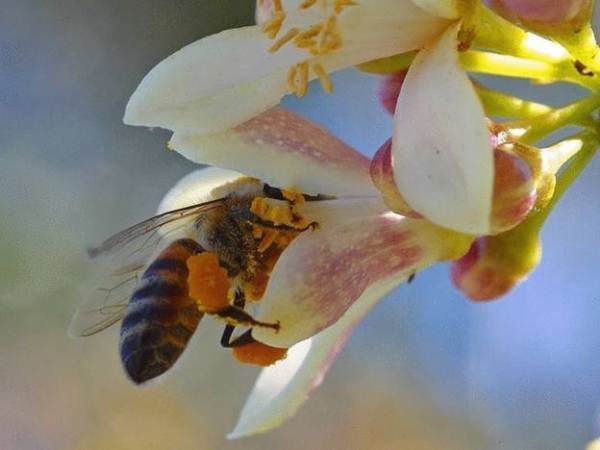
The flowers are large, with a diameter of up to two centimeters. The color is pale pink or white. Flowering begins in spring and ends in summer (southern hemisphere). Thus, bees have the opportunity to collect nectar for five months. This plant needs the sun and a moderate amount of moisture.
Manuka is a great honey plant.In New Zealand, it is very common.
Storage conditions
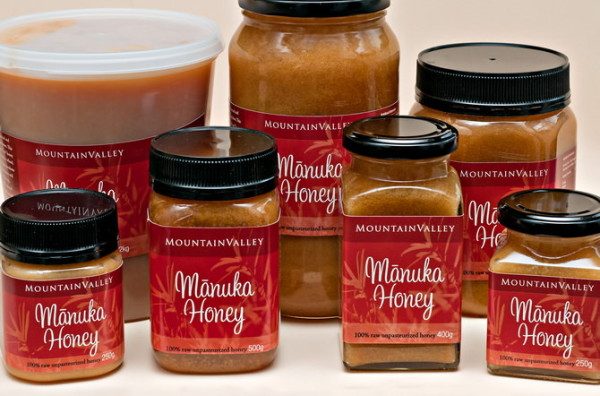
Manuka honey is sold in dark containers. And this is not by chance, since direct sunlight adversely affects its beneficial properties. Ttemperature and humidity it is advisable to maintain in the same range as when storing other varieties. This is 60% relative humidity of the air, and from +4 to +15 degrees of the environment.
What are the main diseases treats?
Manuka honey helps to cope with cough, sore throat, bronchitis. Him recommended to use for inflammation of the gums, gastritis, stomach ulcers, diarrhea and constipation. It restores the intestinal microflora and destroys staphylococcus, expels worms. The product helps with pancreatitis, epilepsy. It has a positive effect on tachycardia, hepatitis, cystitis, relieves headaches.
Also successfully fights with external diseases: psoriasis, herpes, eczema. Honey from Tea Tree heals wounds, skin ulcers.
Without a doubt, this variety strengthens the immune system, and gives a charge of cheerfulness for the whole day.
In case of unknown disease, incl. rashes of various natures are advised to see a doctor first.
Manuka honey - special, unique in its composition. New Zealand beekeepers around the world sell this bee product, which is equated to a drug. Pleasant taste, delicate aroma, beneficial properties, as well as the ability to help in curing various diseases - this is what makes Tea Tree honey so popular in different parts of our planet.

And you can not tell where I can get this miracle honey ????
Unfortunately not. Look in your stores. We do not sell honey.